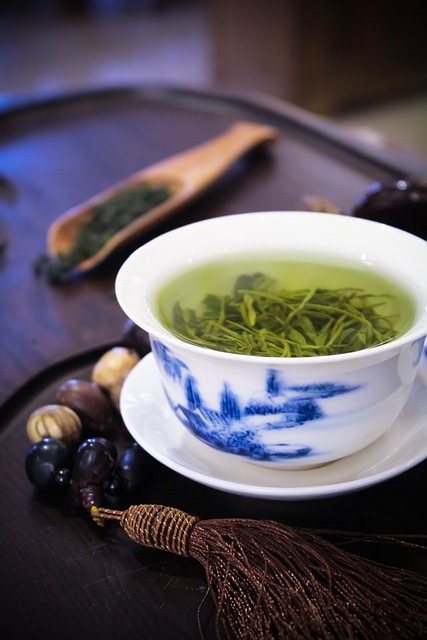A healthy gut is to maintain a healthy balance of beneficial and bad germs. We have a list of Foods that can promote healthier gut.
Microorganisms, the “right balance,” is different for everyone since everyone has their own specific microbiome profile, which is first influenced by gestational birth date, manner of delivery, newborn milk feeding practices, and weaning phase. Aside from that, there are various other factors that influence the health of your microbiome, such as antibiotic use, the types of microorganisms that inhabit your gut, exercise, and other lifestyle decisions, such as nutrition.
Your gut, known as the microbiome, is home to millions of bacteria and other microorganisms, both healthy and bad, that can influence your health in a variety of ways.

According to a comprehensive 2019 review published in the journal Nutrients, what you eat has a direct impact on the composition of bacteria in your gut. A healthy gut aids in the prevention of diseases like cancer and heart disease, as well as the reduction of inflammation, the health of your brain, and the maintenance of a healthy weight. According to a study, a healthy microbiome can even aid with depression.
It is never too late to adjust or change your diet to promote healthy gut bacteria. According to the same Nutrients review, going from a predominantly animal-based diet to a predominantly plant-based diet (and vice versa) can affect the makeup of your microbiome in as quick as 24 hours—for the better or for the worse.
So, how can you strengthen your own microbiome?
Consume more: Probiotics, prebiotics, fiber, polyphenols, and fermented foods are all beneficial.
Consume less: Artificial sweeteners, red meat, processed foods, and alcohol are all bad for you.
Here, we dissect each category and explain what it implies.
Probiotics
Fermented foods like sauerkraut, kimchi yogurt, and miso. These types of foods have probiotics. Consuming probiotic-rich foods increases the amount of beneficial bacteria in your stomach. Lactobacillus and Bifidobacterium are the most frequent forms of beneficial bacteria, each with its unique strains. Probiotics can assist with diarrhea, increase your immunity, and keep your heart and skin healthy, in addition to helping balance your gut bacteria and preventing chronic disease.
Sauerkraut
Sauerkraut is prepared by combining cabbage with salt. Microorganisms consume the sugar in cabbage and produce carbon dioxide and acids during the fermentation process. Probiotics produced during fermentation aid digestion and contribute beneficial microorganisms to your gut.
According to the USDA, one cup of raw cabbage contains 36% of your daily value for vitamin C and 56% of your daily value for vitamin K.
Serve sauerkraut on a hot dog, in place of pickles on a sandwich or burger, in potato salad, or on a cheese platter to give your pals something beneficial for their bellies.
Korean kimchi
Kimchi, commonly known as fermented cabbage, is sauerkraut’s spicy Korean relative. To increase taste, scallions, radishes, and shrimp can be added. Look for it with the sauerkraut, various Asian sauces, and pickles in the refrigerated department.
Kimchi is wonderful when combined with vegetables and an egg in a fried rice bowl.
Kefir
Kefir is similar to drinkable yogurt. Kefir grains, which are yeast and lactic acid bacteria colonies, ferment the sugars in milk, giving it a somewhat thicker consistency and acidic flavor. Kefir, like yogurt, is high in probiotics.
Buy plain kefir (rather than flavored) to avoid additional sugars, or prepare your own. Kefir has a slightly tangy and acidic taste due to fermentation, making it a wonderful addition to a breakfast smoothie in place of milk. Alternatively, for a healthy combination of probiotics and fiber, consider swapping kefir for milk in one of our overnight oats recipes.
Kombucha
Kombucha is a sour, fizzy tea created by infusing green or black tea with yeast and sugar. The mixture is then fermented for a week or more. During fermentation, alcohol and gases are created, providing natural carbonation to the kombucha. The level of alcohol is often less than 0.5% ABV—and commercially manufactured kombucha is required to maintain it no higher than this amount (federal law specifies that any product with more than 0.5% ABV must be regulated and sold as an alcoholic beverage). Some DIY kombuchas, on the other hand, have been reported to have ABVs of 2%-3%.
Keep your homemade kombucha brew cold and refrigerated, and minimize the fermenting time to keep the alcohol levels low. You might also experiment with a different type of tea. According to a study in 2019, rooibos tea kombucha had lower ethanol (a type of alcohol) and acetic acid (called vinegar acid) concentrations than black or green tea kombucha.

When tea is fermented, it produces lactic acid bacteria, which act as a probiotic. Consuming kombucha produced from green tea will also provide you with the antioxidant qualities associated with tea. Remember that some kombuchas, such as those prepared from black tea, contain caffeine. Others contain artificial sweeteners, which can harm gut bacteria (and thus contradict the point of drinking it), so read labels—or create your own.
Miso
Miso is a fermented soybean, barley, or rice paste. Beneficial bacteria are produced during the fermentation process, like with other fermented foods. If you eat miso made from soybeans, you’ll also get some protein. Because miso is heavy in salt, a small amount goes a long way.
Miso is delicious in sauces, dressings, and soup bases. Serve with Miso-Maple Salmon.
Tempeh
Tempeh, like tofu, is made from soybeans, but unlike tofu, tempeh is a fermented food that contains probiotics. Tempeh is prepared by fermenting soybeans and pressing them into a cake. After that, it can be grilled, sautéed, or baked. Tempeh contains a lot of protein, making it a popular choice for vegetarians and vegans. B vitamins, calcium, manganese, zinc, and copper are also present.
Try marinating and grilling tempeh before adding it to a salad. Make Gochujang-Glazed Tempeh and Brown Rice Bowls instead.
Yogurt
Yogurt is the most popular probiotic food and for good reason. When healthy bacteria are added to milk, they metabolize lactose to produce lactic acid and other helpful germs. Look for yogurt that bears the “Live & Active Cultures” seal, which guarantees 100 million probiotic cultures per gram at the time of manufacturing.
A brief glance at the ingredients list will also reveal whether or not the yogurt contains bacteria. Don’t consume dairy? Yogurt’s probiotics aid in the digestion of lactose (milk sugar); thus, if you’re lactose intolerant, you may be able to consume kefir or yogurt. Furthermore, numerous firms now manufacture dairy-free and vegan yogurts with probiotics.
Click here to Read Part 2 on Foods to Promote Healthier Gut
